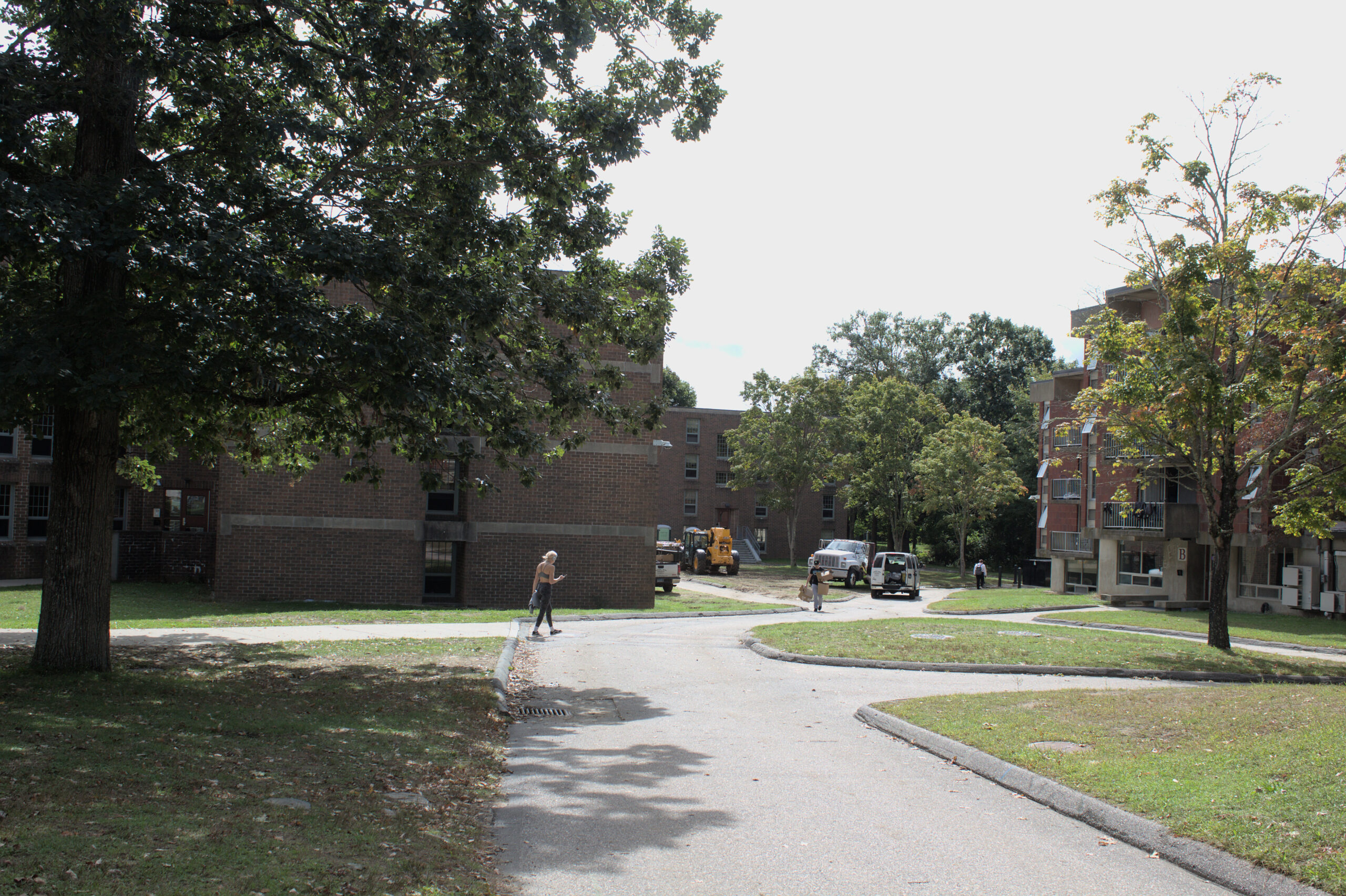New dorm construction planned, current halls facing changes
The effects of the pandemic, and increased numbers in enrollment has shown that on-campus upperclassmen housing has dwindled. PHOTO CREDIT: Hannah Charron | Staff Photographer
Students at the University of Rhode Island have experienced different housing circumstances since the COVID-19 pandemic, and Housing and Residential Life (HRL) has geared up for long-term changes.
Historically, URI’s residential buildings were distinguished by different layouts, where certain rooms were assigned to students based on their class year, according to the director of HRL Frankie Minor.
“The easiest way to think of URI housing is probably dividing it into two or three different categories,” he said.
According to Minor, before COVID-19, first-year students were placed in corridor-style dorms where they shared a room with one or two other students. In these buildings, communal style bathrooms are shared with between 20 and 30 others living on the same floor.
Sophomores were typically assigned either double or single rooms in the Roger Williams Complex housing, which surrounds the Anna Fascitelli Fitness & Wellness Center.
Minor said that this setup has an extra level of privacy, since bathrooms are shared with only two to four students. Two additional residence halls of similar style, Fayerweather and Heathman, were also categorized as sophomore housing in the past.
This left upperclassmen with suite buildings, including Eddy, Garrahy, Wiley, Brookside and the Gateway Apartments.
“In most of these situations, you have a private bedroom, sometimes a kitchen and a bathroom that you share with suitemates,” Minor said. “A little bit more independence and extra responsibility.”
This all changed in the fall of 2020, when URI created a new housing plan to accommodate for COVID-19 health and safety protocols.
HRL reduced the on-campus capacity by approximately 1,000 students by eliminating triples and, according to Minor, gave the highest priority to first-year students to live in Kingston.
Freshmen were now spread across campus differently, forcing the majority of sophomores, juniors and seniors to live off campus. Housing typically claimed by older students were now occupied by first-years. This trend has continued since 2020.
There is still less distinction between corridor-style living and that of the Roger Williams Complex, leaving a number of freshmen in dorms that were previously designated as “sophomore.”
Freshmen Erin Fitzpatrick and Stephanie Levesque are among the population of first-year students living in the Roger Williams Complex.
According to Fitzpatrick, she and Levesque, who live in Dorr Hall, actually prefer their living situation over the “traditional” freshman housing.
“I love living here,” Fitzpatrick said. “We spend so much time sitting on the balcony, even if we’re just doing homework.”
Not all dorms in this area have balconies, so the two consider themselves “lucky” to have this extra feature.
Levesque said that living in Dorr has given them opportunities to bond with more of URI’s community.
“Everyone is always outside and talking to each other, especially during football games,” she said. “We’re surrounded by people all the time, which is how I pictured my freshman year.”
Minor believes that combining freshmen and sophomores in these buildings is necessary for spacial maximization, and does not give any student a “better” living experience during their first year on campus.
“The facility by and large doesn’t really dictate student success,” Minor said. “It’s the environment that people are living with and the community that they create.”
Minor said he is most concerned with accommodating as many students as possible who wish to live on campus. Although many students opt for a “down the line” experience as they progress through their time at URI, off-campus living does not work for everyone.
A variety of decisions by HRL have been aimed to maximize the space for residents at URI. Minor said, for instance, that a number of students worked with Greek Life for a boarding option, where they occupy the sorority or fraternity house despite not being a member. Others might opt for apartments in the Peacedale or Wakefield area.
“It’s on the bus line,” Minor said. “If you’ve got a car, it’s great, and each of these options you could pursue depending upon how desperate you were getting [for housing].”
In terms of the future, HRL intends to continue blurring the lines between age-divided living.
According to Minor, a large part of this is due to URI’s decision to minimize the use of triples. He said that the only students living in a three-person room did so “voluntarily.”
Minor said that students can expect new housing projects to emerge.
“We’re already starting to look at some master planning, and if we can begin to construct new housing,” Minor said. “But that’s a couple of years away.”
For now, HRL will continue to house as many students as possible with the current stock of residence halls.





